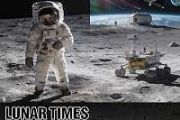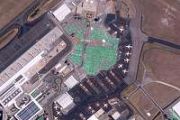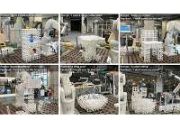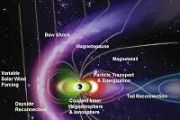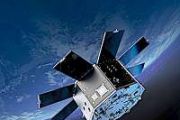
Copernical Team
Toodle-oo Tapo Caparo: Sols 3771-3772
 Today, we finally leave Tapo Caparo and begin something new. But... actually, we are not going very far. Whilst sitting at Tapo Caparo, we spent some time looking around at the neighbourhood using Mastcam and ChemCam imaging. Not too far away, we spotted a workspace that includes two types of bedrock - a finely laminated bedrock (which is what we just drilled) and some bedrock with abundant nodu
Today, we finally leave Tapo Caparo and begin something new. But... actually, we are not going very far. Whilst sitting at Tapo Caparo, we spent some time looking around at the neighbourhood using Mastcam and ChemCam imaging. Not too far away, we spotted a workspace that includes two types of bedrock - a finely laminated bedrock (which is what we just drilled) and some bedrock with abundant nodu Rocket Lab to launch twin satellites for BlackSky from New Zealand
 Rocket Lab USA, Inc (Nasdaq: RKLB) will launch a pair of satellites on a dedicated Electron mission for BlackSky (NYSE: BKSY) through global launch services provider Spaceflight, Inc., during a launch window opening March 22, 2023 UTC.
The mission, named "The Beat Goes On," will launch two of BlackSky's Gen-2 Earth-imaging satellites from Pad B at Rocket Lab Launch Complex 1 in Mahia, New
Rocket Lab USA, Inc (Nasdaq: RKLB) will launch a pair of satellites on a dedicated Electron mission for BlackSky (NYSE: BKSY) through global launch services provider Spaceflight, Inc., during a launch window opening March 22, 2023 UTC.
The mission, named "The Beat Goes On," will launch two of BlackSky's Gen-2 Earth-imaging satellites from Pad B at Rocket Lab Launch Complex 1 in Mahia, New Quantum sensing in outer space
 Texas Engineers are leading a multi-university research team that will build technology and tools to improve measurement of important climate factors by observing atoms in outer space.
They will focus on the concept of quantum sensing, which use quantum physics principles to potentially collect more precise data and enable unprecedented science measurements. These sensors could help satell
Texas Engineers are leading a multi-university research team that will build technology and tools to improve measurement of important climate factors by observing atoms in outer space.
They will focus on the concept of quantum sensing, which use quantum physics principles to potentially collect more precise data and enable unprecedented science measurements. These sensors could help satell Study shines new light on ancient microbial dark matter
 Bacteria are literally everywhere - in oceans, in soils, in extreme environments like hot springs, and even alongside and inside other organisms including humans. They're nearly invisible, yet they play a big role in almost every facet of life on Earth.
Despite their abundance, surprisingly little is known about many microorganisms that have existed for billions of years.
This includ
Bacteria are literally everywhere - in oceans, in soils, in extreme environments like hot springs, and even alongside and inside other organisms including humans. They're nearly invisible, yet they play a big role in almost every facet of life on Earth.
Despite their abundance, surprisingly little is known about many microorganisms that have existed for billions of years.
This includ Terminator zones on distant planets could harbor life
 In a new study, University of California, Irvine astronomers describe how extraterrestrial life has the potential to exist on distant exoplanets inside a special area called the "terminator zone," which is a ring on planets that have one side that always faces its star and one side that is always dark.
"These planets have a permanent day side and a permanent night side," said Ana Lobo, a p
In a new study, University of California, Irvine astronomers describe how extraterrestrial life has the potential to exist on distant exoplanets inside a special area called the "terminator zone," which is a ring on planets that have one side that always faces its star and one side that is always dark.
"These planets have a permanent day side and a permanent night side," said Ana Lobo, a p SpaceX sets a new doubleheader record launch for SES
 Establishing a new record of only four hours between a launch of Starlink satellites from Vandenberg Space Force Base, California, earlier today and a pair of geostationary-bound satellites for SES from Cape Canaveral Space Force Station (CCSFS), Florida.
A Luxembourg-based telecommunications company, SES S.A., sent two C-band television broadcasting satellites atop a 229-foot-tall (70-met
Establishing a new record of only four hours between a launch of Starlink satellites from Vandenberg Space Force Base, California, earlier today and a pair of geostationary-bound satellites for SES from Cape Canaveral Space Force Station (CCSFS), Florida.
A Luxembourg-based telecommunications company, SES S.A., sent two C-band television broadcasting satellites atop a 229-foot-tall (70-met The best way to learn about Venus could be with a fleet of balloons
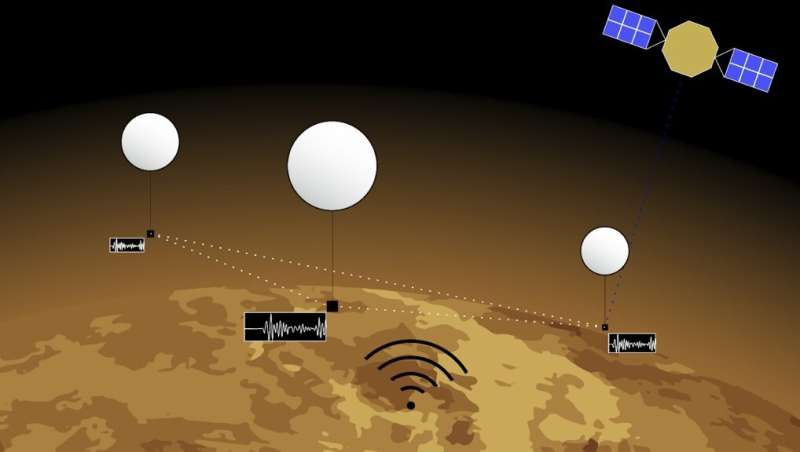
Interest in the exploration of Venus has kicked up a notch lately, especially after a contested recent discovery of phosphine, a potential biosignature, in the planet's atmosphere. Plenty of missions to Venus have been proposed, and NASA and ESA have recently funded several. However, they are mainly orbiters, trying to peer into the planet's interior from above. But they are challenged by having to see through dozens of kilometers of an atmosphere made up of sulfuric acid.
That same atmosphere is challenging for ground missions. While some of the recently funded missions include a component on the ground, they are missing an opportunity that isn't afforded on many other planets in the solar system—riding along in the atmosphere. Technologists have proposed everything from simple balloons to entire floating cities—we even heard of a plan to enclose the entirety of Venus in a shell and live on the surface of that shell.
Rolls-Royce wins UK funds for 'Moon' nuclear reactors
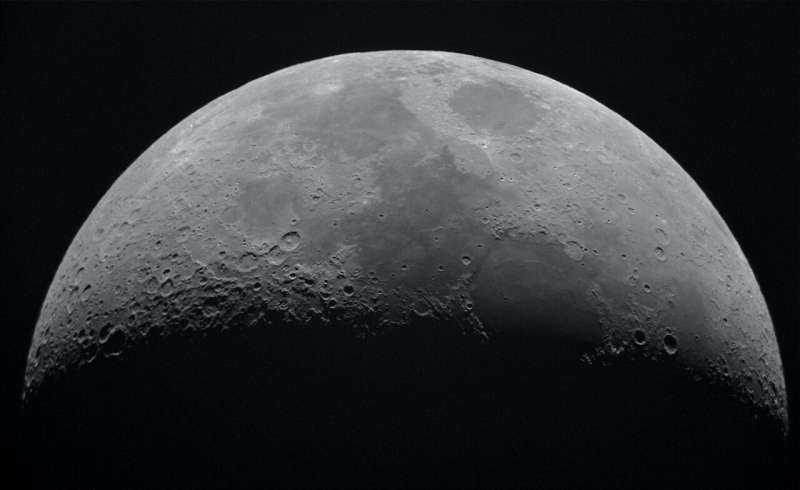
British aerospace giant Rolls-Royce said Friday it had secured UK funding to develop small nuclear reactors that could provide power on the Moon.
Rolls said the UK Space Agency had offered it £2.9 million ($3.5 million) to help research "how nuclear power could be used to support a future Moon base for astronauts".
"Scientists and engineers at Rolls-Royce are working on the micro-reactor program to develop technology that will provide power needed for humans to live and work on the Moon," the aerospace company added in a statement.
Rolls forecast its first car-sized reactor would be ready to be sent to the Moon by 2029.
Friday's news comes as US space agency NASA aims to return humans to the Moon in 2025.
It would be the first visit since the historic Apollo missions ended in 1972.
"Nuclear power has the potential to dramatically increase the duration of future lunar missions and their scientific value," Rolls said.
The group, best known for its engines powering Airbus and Boeing aircraft, will work alongside UK universities including Oxford on the space project.
NASA appoints Lunar science leads for Artemis 3 and 4
 NASA has appointed two scientists to coordinate the lunar science teams supporting the first and second crewed lunar landing missions in more than 50 years. NASA's Artemis missions will land the first woman and first person of color on the Moon, using innovative technologies to explore the lunar South Pole region and establish a long-term presence at the Moon.
Noah Petro, of NASA's Goddard
NASA has appointed two scientists to coordinate the lunar science teams supporting the first and second crewed lunar landing missions in more than 50 years. NASA's Artemis missions will land the first woman and first person of color on the Moon, using innovative technologies to explore the lunar South Pole region and establish a long-term presence at the Moon.
Noah Petro, of NASA's Goddard Space Systems Command demonstrates satellite anti-jam capability
 Space Systems Command (SSC) successfully demonstrated its ground-based antijamming satellite communications (SATCOM) capability using an on-orbit operational satellite. The event demonstrated over-the-air Protected Tactical Waveform (PTW) connectivity between a Protected Tactical Enterprise Service (PTES) Joint Hub and a test terminal, and over-the-wire connectivity to a PTW-capable modem develo
Space Systems Command (SSC) successfully demonstrated its ground-based antijamming satellite communications (SATCOM) capability using an on-orbit operational satellite. The event demonstrated over-the-air Protected Tactical Waveform (PTW) connectivity between a Protected Tactical Enterprise Service (PTES) Joint Hub and a test terminal, and over-the-wire connectivity to a PTW-capable modem develo 
